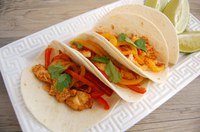Prairie Fare: Victory Garden Lessons Ring True Today
(Click an image below to view a high-resolution image that can be downloaded)
By Julie Garden-Robinson, Food and Nutrition Specialist
NDSU Extension
As I grow older, my interest in history continues to increase.
When a colleague sent me an article about the World War II-era Victory Gardens, my attention was drawn to the emailed newsletter on my computer screen. Memories were stirred.
The 2019 newsletter had been assembled by faculty and students from North Carolina State University. I will share a few of the tidbits I learned, as well as some information from my own exploration.
You might recall living through difficult times of war or hearing about it from parents or grandparents.
Victory Gardens were launched during World War I to help with the extreme food shortage in Europe. Agricultural fields had become battlegrounds and farm workers were fighting in a war. Food was scarce.
Families were encouraged to eat more fruits and vegetables, which were very perishable and difficult to ship. In turn, families were asked to eat less meat, wheat, fat and sugar so these foods could be transported to the soldiers.
Although school gardens and children’s gardening research seem novel in today’s world, the concepts go back more than 100 years. Children played a valuable role in helping grow food.
During World War I, 1.5 million children became part of the U.S. “School Garden Army” and 20,000 acres were planted to avoid a food crisis.
Schools, 4-H clubs and FFA (formerly Future Farmers of America) clubs became involved in gardening. Teachers taught the scientific concepts of food production and preservation in classrooms.
Thinking back, when I was young, my dad and I used to watch a TV show about Victory Gardens on public TV. My dad spent four years overseas during World War II and he probably remembered the Victory Gardens firsthand.
Watching those gardening TV shows many years ago probably planted a seed in my mind about a future career in nutrition and a hobby as a gardener.
I used to call my dad “Victor Garden” as he watered our backyard garden. He’d look up and grin at his silly kid, who, of course, shared his last name. I was just happy my parents didn’t name me “Rose Garden.”
As I think about it, the backyard garden of my childhood home probably had been a Victory Garden during one if not both World Wars. My grandparents had owned our home, which was built a couple of years before World War I.
During the early 1940s, much of the country’s agricultural harvest was shipped overseas to feed soldiers. Railroads were overloaded, steel and tin shortages occurred, and fewer people were available to work in agricultural production.
Food ration books were issued during World War II, and Americans could spend their stamps on various food items such as sugar. Recipes were reinvented to substitute other ingredients for the rationed ones.
By 1943, an estimated 18 million families were growing Victory Gardens. Educational materials provided background on planting, pest control, preservation and preparing nutritious meals with what was available.
Posters beckoned potential gardeners with slogans such as “Plant a Victory Garden. A garden will make your rations go further.”
The nationwide Cooperative Extension System was part of the community educational efforts to promote gardening. The gardening plans suggested one-tenth of an acre for each family member and included detailed charts for a variety of vegetables.
People know of my interest in food history and anything antique, so I have a stack of “Health for Victory” cookbooks dated 1942 to 1944, which were companion pieces to the gardening plans. Many of the concepts in those nearly 80-year-old cookbooks ring true today.
These are some direct quotes from the book:
- “Don’t waste food.” In 1944, the cookbooks said “15% of America’s food gets thrown out in the garbage can.” Unfortunately, in 2019, 40% of the food in the U.S. is wasted.
- “Don’t overbuy because food is a bargain. Get only those you can use.”
- “Use fresh fruits in season.”
- “Plan your meals by the week.”
- “Plant a Victory Garden this year, no matter where you live. Beg, borrow or hire some land.”
We are at the end of our growing season in the Midwest, but the last point provides some food for thought for next year. Learn about growing food this winter, but try your hand at preserving food this fall, whether you grew the food yourself or purchased it from a store or farmers market.
See the NDSU Extension Field to Fork website at https://www.ag.ndsu.edu/fieldtofork to view recorded seminars (webinars) from our many experts at NDSU, as well as colleagues from other colleges and universities. The website also provides opportunities to learn about preserving fruits and vegetables through freezing, canning, drying and fermenting.
This colorful, tasty recipe is not from the World War II-era cookbooks I have, but it features peppers and onions that are in season right now. One-pan meals are a time-saving cooking style.
One-pan Chicken Fajitas
1 1/2 pounds chicken breasts cut into 1/2-inch strips
2 red bell peppers, sliced into strips
1 green bell pepper, sliced into strips
1 onion, sliced
3 Tbsp. olive or canola oil
1 packet taco seasoning, reduced-sodium
1 lime
12 whole-wheat tortillas
Optional toppings: shredded cheese, salsa, sour cream, avocado
Preheat oven to 425 degrees. Prepare food as directed and place in a bowl. Drizzle oil over chicken, bell peppers and onion. Sprinkle with taco seasoning and toss to coat. Spread contents on greased sheet pan. Bake for 15 to 20 minutes or until chicken is fully cooked. Squeeze lime juice over pan and serve with whole-wheat tortillas. Garnish as desired.
Makes 10 servings (one fajita per serving). Without added toppings, each fajita has 280 calories, 9 grams (g) fat, 20 g protein, 27 g carbohydrate, 3 g fiber and 380 milligrams sodium.
(Julie Garden-Robinson, Ph.D., R.D., L.R.D., is a North Dakota State University Extension food and nutrition specialist and professor in the Department of Health, Nutrition and Exercise Sciences. Follow her on Twitter @jgardenrobinson)
NDSU Agriculture Communication - Aug. 29, 2019
| Source: | Julie Garden-Robinson, 701-231-7187, julie.garden-robinson@ndsu.edu |
|---|---|
| Editor: | Ellen Crawford, 701-231-5391, ellen.crawford@ndsu.edu |



